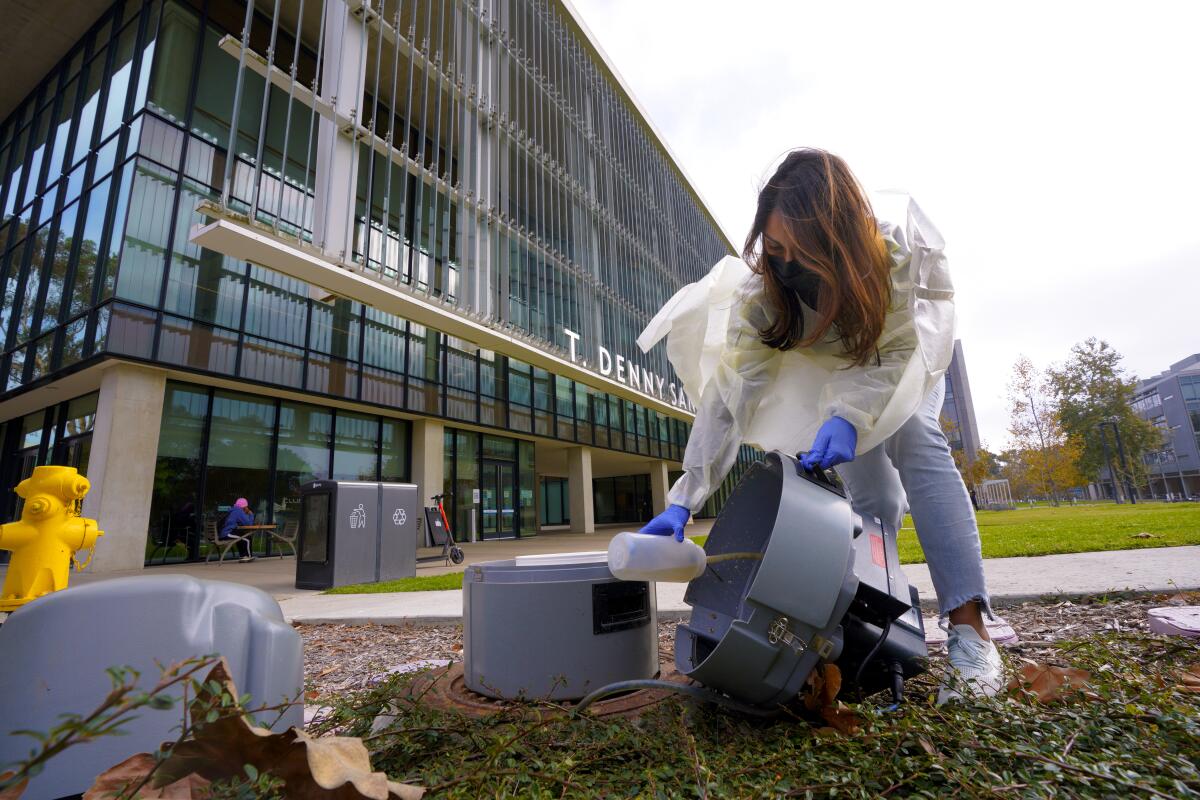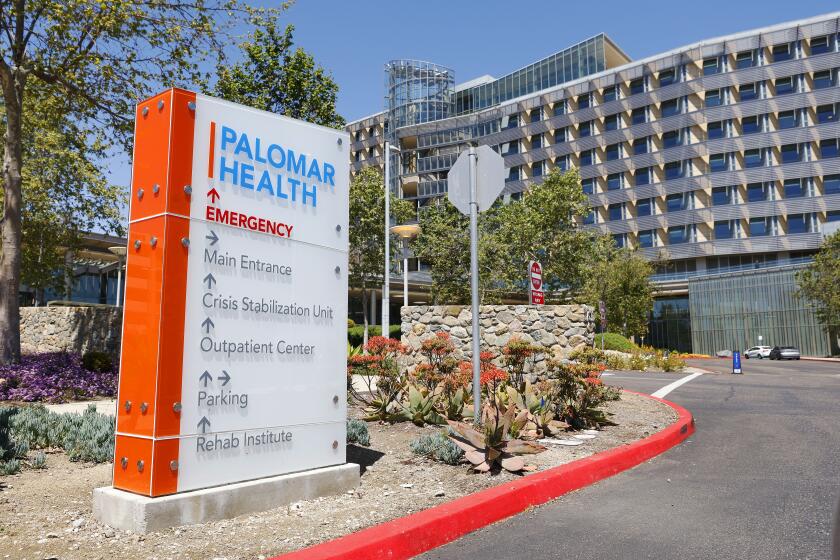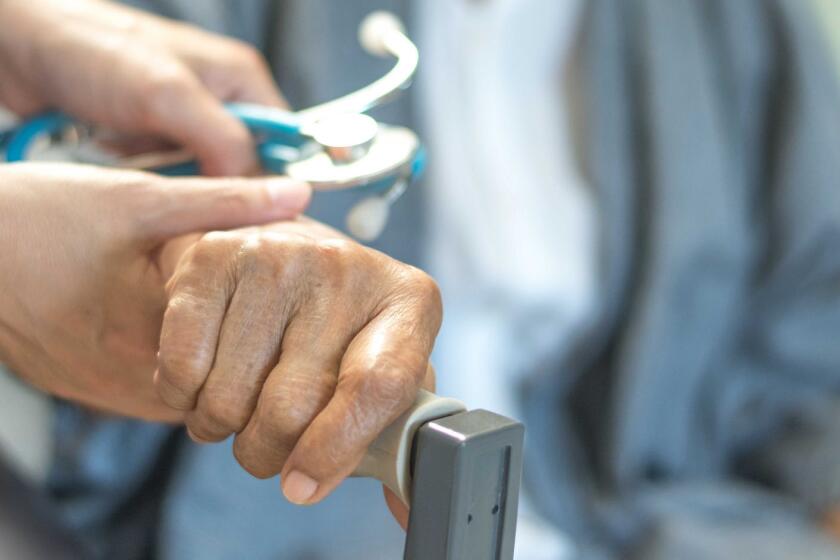Another COVID-19 surge is likely coming. How will we know when it’s here?

There is a growing consensus nationwide the answer is in the sewer system
New coronavirus surges are now under way in Western Europe and Asia as the BA.2 subvariant proves that it is more contagious than its cousin Omicron. Germany, France and the United Kingdom, all countries with vaccination rates similar to those in the United States, have seen significant increases in coronavirus activity in the first few weeks of March.
So far, America’s overall coronavirus numbers are still dropping, but many say they expect that to change soon.
This story is for subscribers
We offer subscribers exclusive access to our best journalism.
Thank you for your support.
Experts such as Justin Meyer, an evolutionary biologist at UC San Diego who has studied the early origins of SARS-COV-2, and many other viruses, said there is no reason to think it will stay that way. Previous variants have tended to rise first in Europe before taking off in the continental U.S.
“We have seen all of these steps happen in the past few weeks, and I think soon cases in the U.S. will begin to increase, just like they did for the Delta and Omicron waves,” Meyer said.
This time around, those who know where to look are likely to detect the next surge before local case numbers spike.
San Diego, through a collaborative project run by researchers at UC San Diego, has more than a year of experience analyzing wastewater samples drawn from a few key locations across the region, with the longest-running public effort outside the university campus itself regularly testing effluent collected from a sewage plant in Point Loma. The county health department has also allocated $4.6 million to the Safer at School Early Alert System, which includes sampling equipment at some public schools.
For the Delta and Omicron waves, the amount of virus particles present in those samples tracked closely with local case rates. But the amount of virus detected in samples — termed the “viral load” — increased a week or more before the number of positive test results jumped.
Wastewater, then, appears to be a kind of early warning system for a return to higher levels of coronavirus activity.
Some are starting to view wastewater statistics as the new trigger for changing the pandemic response, with UC San Diego Health announcing last week that the metric will be the most closely watched in its “new normal” operations plan that takes effect Monday.
With the number of viral copies detected in the region’s most recent wastewater sample on March 8 at 1.2 million, down precipitously from the peak of 47.6 million on Jan. 9, the university will operate under the assumption that transmission is currently low.
Relying mainly on positive test results to gauge the pandemic’s current pace, noted Dr. Christopher Longhurst, the health system’s medical director, can provide an incomplete picture, given that not everyone in the community has equal access to testing. And with home testing now significantly more available and popular than it was in previous years, many positive results are never sent to public health departments for inclusion in regular coronavirus reporting.
“For us here in San Diego, where we do have very good wastewater testing, there is no reason for us not to prioritize wastewater, from my standpoint,” Longhurst said in an interview last week.
But that perspective is not necessarily universal.
Scripps Health, Sharp HealthCare and Kaiser Permanente San Diego, the region’s three largest health care systems, said in statements last week that they are not yet ready to declare that viral load detected in wastewater will be the key sentinel indicator upon which their pandemic responses turn.
But all also said they are already using the information, but case rates are still likely to be a main factor in deciding whether to relax or increase COVID-related precautions such as whether to test patients before surgeries, allow indoor dining in cafeterias or congregating in shared spaces such as waiting rooms.
Dr. Ghazala Sharieff, chief medical officer of acute care and clinical excellence at Scripps Health, said that Scripps is still working on a full operational plan that will dictate when the organization’s pandemic posture should change. Scripps, she said, is not yet ready to pull back on inpatient coronavirus testing and other factors.
The main trigger for rolling back current restrictions, such as those requiring no more than two visitors per patient, she said, is less than 1 percent of tests coming back positive among Scripps patients. Currently, the positivity rate for all Scripps patients, she said, stands at about 2.6 percent.
Scripps, Sharieff said, did not want to pull back on its COVID-19 precautions too quickly, given the large number of patients it has served in the recent surge.
“When you see what we’ve seen, there is no rush to relax,” Sharieff said.
Wastewater, she said, will be part of deciding when restrictions might need to change, but the approach is likely to take into account many factors.
Statewide, there seems to be a significant move toward wastewater monitoring. California’s recently released SMARTER plan, which is intended to provide a guide for maintaining readiness when viral activity drops but does not entirely disappear, calls for maintaining wastewater surveillance “in all regions” and sequencing at least 10 percent of positive cases to determine what variants are moving through communities.
In an emailed response, the California Department of Public Health clarified that wastewater is to complement “traditional case surveillance for COVID-19 already in place in each county.”
“CDPH plans to expand wastewater surveillance, including through partnerships, to have representation from all regions of California, including areas that currently do not have wastewater surveillance,” the department said.
Meanwhile, case rates still show that the world is not finished with this virus.
Real-time statistics compiled by Our World in Data, a nonprofit information analysis collaborative run by researchers at the University of Oxford, show that Germany, France and the United Kingdom saw local coronavirus activity increase by an average of 625 cases per million residents from March 1 through St. Patrick’s Day. Numbers have not yet turned decisively upward in the United States. According the the U.S. Centers for Disease Control and Prevention, the seven-day average of cases fell to 30,040 Wednesday compared to 55,125 on March 1.
What kind of impact would a new surge have locally? The fact that so many got sick during the recent holiday surge will definitely play a role because BA.2 is so similar to its predecessor.
“Given how many people were infected by (Omicron), the U.S. population should have a lot of protection and hospitalizations will likely be reduced compared to the first Omicron wave,” Meyer said. “That being said, it’s important to get vaccinated and boosted to maintain high levels of protection.”
Get Essential San Diego, weekday mornings
Get top headlines from the Union-Tribune in your inbox weekday mornings, including top news, local, sports, business, entertainment and opinion.
You may occasionally receive promotional content from the San Diego Union-Tribune.












